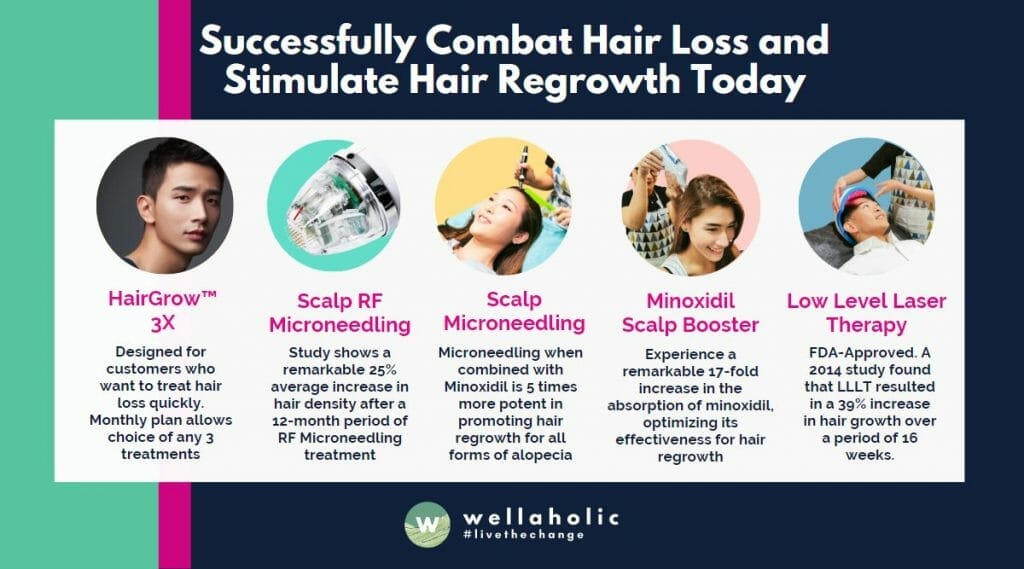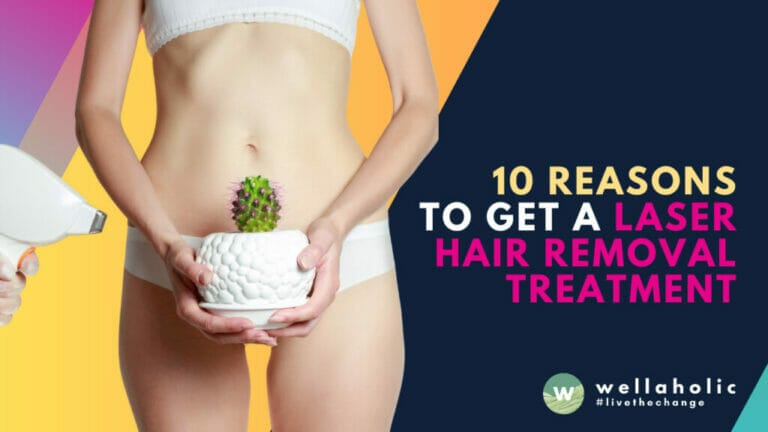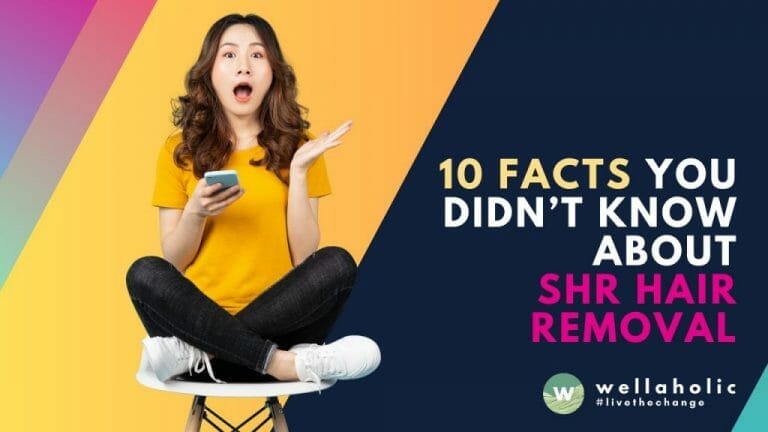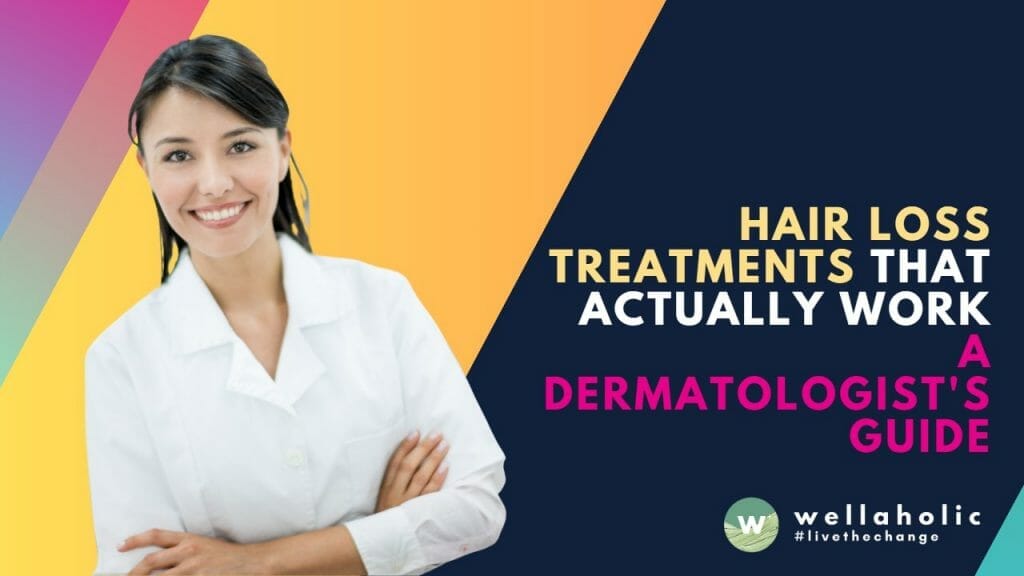
Hair Loss Treatments That Actually Work: A Dermatologist’s Guide
Table of Contents
- 0.1 TL:DR Summary
- 0.2 Introduction: Hair Loss Treatments That Actually Work
- 0.3 Perspective from a Dermatologist
- 0.4 Treatment #1: Minoxidil
- 0.5 Treatment #2: Finasteride and Dutasteride
- 0.6 Treatment #3: Platelet-rich plasma (PRP)
- 0.7 Treatment #4: Low Level Laser Therapy (LLLT)
- 0.8 Recommended Step-by-Step Guide to Treat Hair Loss Effectively
- 0.9 Frequently Asked Questions (FAQ)
- 0.10 Book Now Pay Later
- 0.11 Low Level Laser Therapy to Stop Hair Loss
- 1 Dermatologist’s Guide: Discover Effective Hair Loss Treatments That Actually Work for Hair Regrowth and Health Maintenance
TL:DR Summary
- Understanding Hair Loss: Hair loss can be due to various factors, from genetics to lifestyle choices and medical conditions.
- Effective Topical Treatments: Minoxidil is a proven topical treatment, stimulating hair growth and slowing hair loss when applied consistently.
- Oral Medications: Finasteride, a prescription drug, effectively blocks the hormone responsible for male pattern baldness, promoting hair regrowth.
- PRP Treatments: Platelet-rich plasma (PRP) therapy utilizes your own blood to stimulate hair growth and reduce hair loss.
- Low-Level Laser Therapy (LLLT): LLLT uses cool lasers to stimulate hair follicles, enhancing hair density and fullness over time.
- Consultation is Key: For effective results, consult a dermatologist who can recommend the right treatment based on your hair loss condition.
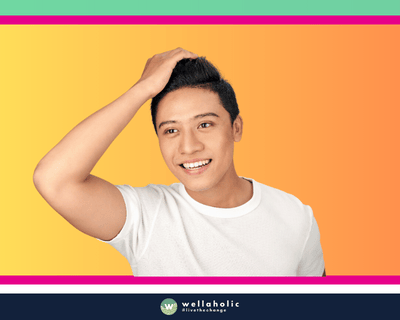
Introduction: Hair Loss Treatments That Actually Work
Navigating through hair loss can be a complex and emotional journey, but you don’t have to face it alone. At Wellaholic, we understand that hair loss can be attributed to a multitude of factors, such as significant life stressors that result in conditions like telogen effluvium. As cited by leading health publications like Medical News Today, it’s crucial to address the root cause for effective treatment.
Consulting a dermatologist is a step in the right direction, and we take it a notch higher by offering a team of highly trained and experienced specialists. We personalize our hair loss solutions by applying cutting-edge technology and evidence-based techniques, empowering you to achieve your desired results in a manner that’s both safe and effective.
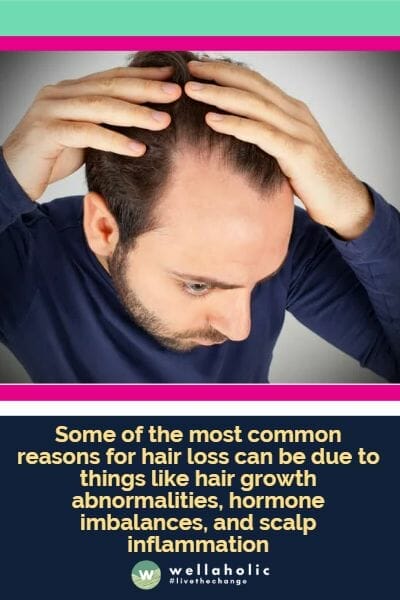
Perspective from a Dermatologist
Dr. Dray: Dermatology Expert. Dr. Dray is a board-certified dermatologist with over 20 years of experience in clinical dermatology. She has a YouTube channel where she shares her expertise on skincare, beauty, and dermatology-related topics. Dr. Dray’s channel is an excellent resource for anyone interested in skincare and beauty. You can check out her channel here.
Hair Loss Treatments. As a board-certified dermatologist, Dr. Dray knows firsthand how frustrating hair loss can be for both men and women. She believes that while there is no cure for hair loss, there are treatments that actually work. In one of her videos, she discusses various hair loss treatments, their efficacy, and possible side effects. Dr. Dray emphasizes that it’s important to consult a board-certified dermatologist to get an accurate diagnosis before considering any hair loss treatment.
Comprehensive Guide. The video provides a comprehensive guide on hair loss treatments that have been researched and proven to be effective. Dr. Dray acknowledges that hair loss can be emotionally distressing and believes it’s crucial to have accurate information and guidance to make informed decisions about treatment options.
Alopecia areata, an autoimmune disorder that causes hair loss, is more common among Asians than in other ethnic groups. The incidence of alopecia areata in Asians is estimated to be around 0.2-0.3%, based on research by Wellaholic.

Treatment #1: Minoxidil
What is minoxidil? Minoxidil is a medicine that can help with hair loss. You can get it as a cream or a pill and it works better when you use it with another medicine called finasteride. Some studies say that using both medicines can stop hair loss and make new hair grow in more than half of the people who try it.
How do you use minoxidil cream? Minoxidil cream is easy to use and you don’t need a doctor’s note to buy it. You just put it on your scalp where you want more hair to grow. It makes more blood go to your hair roots, which helps them grow stronger and healthier. But remember that minoxidil cream doesn’t work for everyone and it might take some time to see the results.
Should you talk to a skin doctor before using minoxidil? Yes, Dr Gary says that you should always talk to a skin doctor before you start using minoxidil or any other hair loss treatment. They can check your scalp and tell you what is the best way to treat your hair loss problem. Sometimes minoxidil might not be the best choice for you and they can suggest other options. Also, they can tell you how to use minoxidil safely and what to do if you have any side effects like itching or dryness on your scalp.
Is minoxidil a good solution for hair loss? Minoxidil can be a helpful way to treat hair loss, especially if you use it with finasteride. But it is not a magic cure and it might not work for everyone. You should always talk to a skin doctor before you try it and follow their advice on how to use it correctly.
See the table below for a breakdown of the benefits of Microneedling on Scalp for hair growth or hair regrowth.
| Benefits | Details |
|---|---|
| Increases blood circulation | – Microneedling creates tiny punctures on the scalp – Which stimulates blood flow to the hair follicles – This increased circulation can help to deliver more oxygen and nutrients to the hair follicles, promoting healthier hair growth. |
| Induces collagen production | – Microneedling can induce the production of collagen – Which is a protein that is essential for healthy hair growth – Collagen helps to strengthen hair follicles and improve the elasticity of the scalp, which can prevent hair breakage and hair loss. |
| Reduces inflammation | – Microneedling can reduce inflammation on the scalp – Which can be a contributing factor to hair loss – By reducing inflammation, microneedling can create a healthier environment for hair growth. |
| Enhances absorption of topical treatments | – Microneedling can enhance the absorption of topical treatments – Such as minoxidil or hair growth serums – The tiny punctures created by microneedling can help these treatments to penetrate deeper into the scalp, increasing their effectiveness. |
| Improves overall scalp health | – Microneedling can improve overall scalp health – By removing dead skin cells and unclogging hair follicles – This can create a healthier environment for hair growth and prevent conditions such as dandruff and scalp acne. |
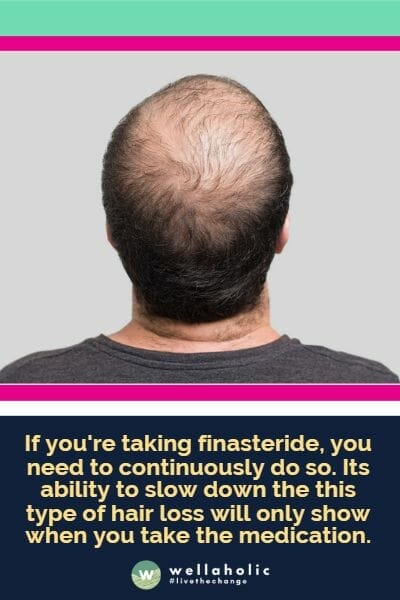
Treatment #2: Finasteride and Dutasteride
What are finasteride and dutasteride? Finasteride and dutasteride are medicines that can help with hair loss. They stop your body from making a hormone called DHT that can make your hair fall out. By lowering the amount of DHT in your body, these medicines can stop hair loss and make new hair grow back.
How do you take finasteride and dutasteride?Finasteride and dutasteride are pills that you have to take every day to keep them working. You need a doctor’s prescription to get them and you should only take them if a skin doctor says it’s okay. This is because these medicines can have some side effects that can affect your sex life and your mood.
Should you talk to a skin doctor before using finasteride or dutasteride? Yes, Dr Gray says that you should always talk to a skin doctor before you start using finasteride or dutasteride or any other hair loss treatment. They can check your hair and tell you if these medicines are right for you. They can also tell you how to use them safely and what to do if you have any side effects like less sex drive or feeling sad. Plus, they can suggest other ways to treat your hair loss problem if these medicines don’t work for you.
Are finasteride and dutasteride good solutions for hair loss? Finasteride and dutasteride can be helpful ways to treat hair loss, but they are not for everyone. You should always talk to a skin doctor before you try them and follow their advice on how to use them correctly.
In summary, finasteride and dutasteride can be effective medications for treating hair loss by blocking the production of DHT.
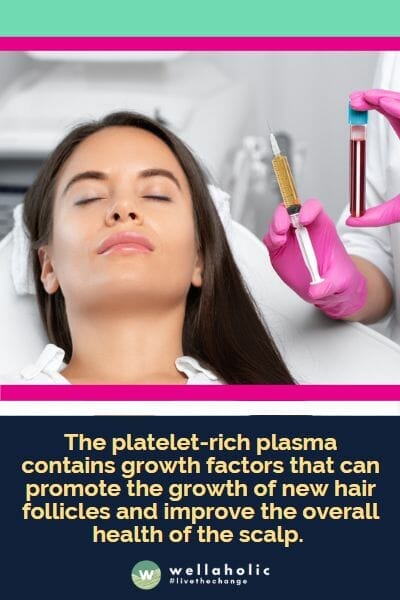
Treatment #3: Platelet-rich plasma (PRP)
What is PRP? PRP stands for platelet-rich plasma and it is a way to treat hair loss. It works by taking some of your blood and separating the part that has platelets from the rest. Platelets are tiny cells that help your body heal and grow. Then, the platelet-rich plasma is injected into your scalp where you want more hair to grow.
How does PRP help with hair loss? PRP can help with hair loss because it has growth factors that can make new hair grow and make your scalp healthier. Some studies say that PRP is a safe and effective way to treat hair loss. But remember that PRP might not work for everyone and it might take some time to see the results.
Should you talk to a skin doctor before using PRP? Yes, Dr Gray says that you should always talk to a skin doctor before you start using PRP or any other hair loss treatment. They can check your hair and tell you if PRP is right for you. They can also tell you how to use PRP safely and how often you need to get the injections. Plus, they can warn you about any side effects that might happen like pain or swelling on your scalp.
Is PRP a good solution for hair loss? PRP can be a helpful way to treat hair loss, but it is not for everyone. You should always talk to a skin doctor before you try it and follow their advice on how to use it correctly.
In summary, PRP is a hair loss treatment that involves injecting the patient’s own platelet-rich plasma into the scalp to stimulate hair growth.
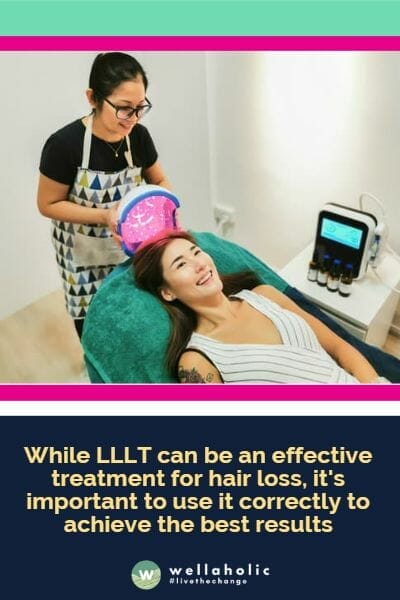
Treatment #4: Low Level Laser Therapy (LLLT)
What are low-level laser therapy devices?. Low-level laser therapy devices are a way to treat hair loss that uses lasers. They work by shining a little bit of laser light on your scalp, which makes your hair roots stronger and healthier.
How do low-level laser therapy devices help with hair loss? Low-level laser therapy devices can help with hair loss because they can make new hair grow and stop hair from falling out. Some studies say that low-level laser therapy devices are good for treating hair loss, especially if you have a type of hair loss called androgenetic alopecia. But remember that low-level laser therapy devices might not work for everyone and it might take some time to see the results.
Should you talk to a skin doctor before using low-level laser therapy devices?. Yes, Dr Gray says that you should always talk to a skin doctor before you start using low-level laser therapy devices or any other hair loss treatment. They can check your hair and tell you if low-level laser therapy devices are right for you. They can also tell you how to use low-level laser therapy devices safely and how often you need to use them. Plus, they can warn you about any side effects that might happen like redness or itching on your scalp.
Are low-level laser therapy devices a good solution for hair loss? Low-level laser therapy devices can be a helpful way to treat hair loss, but they are not for everyone. You should always talk to a skin doctor before you try them and follow their advice on how to use them correctly.
In summary, low-level laser therapy devices are a hair loss treatment option that involves emitting low levels of laser energy to the scalp to stimulate hair growth.
Low-level laser therapy (LLLT) is a non-invasive treatment for hair loss that works by stimulating hair follicles and promoting hair growth. Here’s how LLLT treats hair loss or balding:
| Features | Explanation of How LLLT Treats Hair Loss |
|---|---|
| Increases blood flow | LLLT increases blood flow to the scalp and hair follicles. This increased blood flow delivers more oxygen and nutrients to the hair follicles, which can promote hair growth. |
| Stimulates hair follicles | LLLT stimulates hair follicles in the resting (telogen) phase to enter the growth (anagen) phase. This can lead to an increase in the number of hair follicles in the growth phase, which can promote hair growth. |
| Reduces inflammation | LLLT can reduce inflammation in the scalp, which can be a contributing factor in hair loss. |
| Promotes cell growth | LLLT promotes cell growth and repair in the scalp and hair follicles, which can promote hair growth. |
| Energizes hair follicles | LLLT provides energy to hair follicles, which can help them function more effectively and promote hair growth. |
| Non-invasive and safe | LLLT is a non-invasive treatment for hair loss that is generally considered safe. It does not require any incisions or injections, which can minimize the risk of complications. LLLT is associated with few side effects, and there is no evidence to suggest that it carries any long-term risks or complications. |
| Evidence-based treatment | Clinical studies have found LLLT to be a safe and effective treatment for hair loss, particularly for male and female pattern baldness. LLLT has been shown to increase hair density and thickness, and it works by promoting blood flow, stimulating hair follicles, reducing inflammation, promoting cell growth, and energizing hair follicles. |
“One theme you’ll notice throughout this video as I go through the different treatments is that many treatments can be used alongside other treatments, and in many cases, combinations of treatments yield the best results.” – Dr. Dray
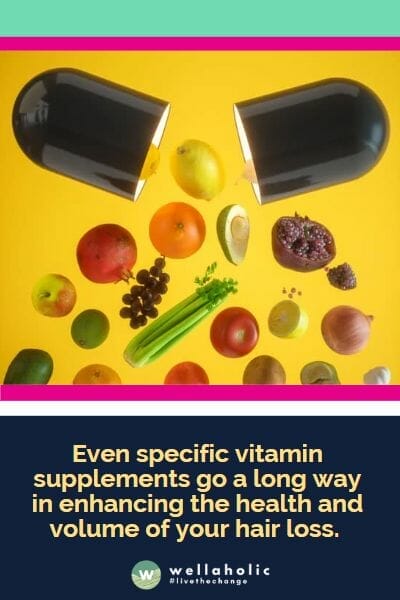
Recommended Step-by-Step Guide to Treat Hair Loss Effectively
Why you should see a dermatologist for hair loss. Hair loss can be caused by many factors, such as genetics, hormones, stress, or medical conditions. It can affect your self-esteem and confidence, so it’s important to get help from a professional who can diagnose the cause and recommend the best treatment for you. Dr Gray is a dermatologist who specializes in hair loss and he has some advice for you.
Topical medications for hair loss. One of the most common treatments for hair loss is applying a liquid or foam to your scalp. This can help stimulate hair growth and prevent further hair loss. One example is minoxidil, which you can use twice a day. Another option is ketoconazole shampoo, which can reduce inflammation and block an enzyme that makes your hair thin.
Oral medications for hair loss. Some people may benefit from taking pills that can slow down or stop hair loss. These pills work by affecting your hormones or enzymes that are involved in hair growth. For men, finasteride or dutasteride are often prescribed. For women, spironolactone can help balance their hormones and prevent hair loss.
Other treatments for hair loss. If topical or oral medications are not enough, there are other ways to treat hair loss. One of them is PRP injections, which use your own blood to improve the health of your hair follicles. Another one is hair transplant surgery, which moves healthy hair from one part of your scalp to another. You can also try low-level laser therapy, which uses light to stimulate blood flow and hair growth. Wellaholic offers this service and it can be combined with other treatments.
How to choose the right treatment for you. Not everyone responds the same way to different treatments, so it’s important to talk to a dermatologist who can assess your condition and suggest the best option for you. A dermatologist can also tell you how to use the treatments correctly and what side effects to watch out for. By following their advice, you can improve your chances of getting the results you want.
- See a Dermatologist or Expert. See a board-certified dermatologist to get an accurate diagnosis of your hair loss.
- Use Minoxodil. Consider using minoxidil as a topical medication, applied twice a day to the scalp.
- Consider Finasteride or Dutasteride, or Spironolactdone. For men, consider finasteride or dutasteride, while spironolactone is a treatment option for women.
- Use Ketoconazole Shampoo. Use ketoconazole shampoo to reduce inflammation and inhibit the 5-alpha reductase enzyme.
- Consider PRP Injections. Consider PRP injections to improve hair follicle health, or hair transplant surgery for more severe hair loss.
- Use LLLT Device. Use low-level laser therapy device, in conjunction with other treatments to improve hair growth.
Frequently Asked Questions (FAQ)
1. What Makes Wellaholic’s Approach to Hair Loss Treatment Unique in Singapore?
Answer: Wellaholic stands out in Singapore for its comprehensive hair regrowth services, utilizing advanced technologies like microneedling, RF, and laser. Our customized treatment plans are tailored to individual needs, backed by experienced staff using top-of-the-line products. We ensure transparent pricing with no hidden costs, and our positive customer feedback reflects our commitment to effective results.
2. How Does Wellaholic Ensure the Effectiveness of Its Hair Loss Treatments?
Answer: Wellaholic employs evidence-based techniques and cutting-edge technology in all hair loss treatments. Our treatments, such as Low-Level Laser Therapy (LLLT) therapy, are backed by scientific research and clinical trials. We also offer a step-by-step guide and consultation with dermatologists to ensure each treatment is suited to the individual’s specific hair loss condition.
3. Can Wellaholic’s Hair Loss Treatments Be Combined for Better Results?
Answer: Yes, at Wellaholic, we believe in the efficacy of combining treatments for optimal results. Treatments like LLLT, and topical medications like Minoxidil can be used in conjunction to address different aspects of hair loss, enhancing overall effectiveness. Our specialists can recommend the best combination based on your unique hair loss profile.
4. What Are the Key Factors Influencing the Success of Hair Loss Treatments at Wellaholic?
Answer: The success of hair loss treatments at Wellaholic is influenced by several factors, including the type and stage of hair loss, individual health conditions, and adherence to treatment protocols. Our dermatologists consider these factors to tailor a treatment plan that maximizes the chances of successful hair regrowth.

Serene Chiam, Aesthetic Director
Serene Chiam is the Aesthetic Director at Wellaholic, a well-known aesthetic chain in Singapore. She has more than ten years of experience in the aesthetics industry. With a Bachelor of Health Science (Aesthetics) and CIDESCO certifications, she expertly combines scientific knowledge with practical skills. Serene is known for her personalized approach to beauty, ensuring each Wellaholic client’s journey is unique and transformative. Her significant contributions have been pivotal in establishing Wellaholic’s reputation for excellence in aesthetic wellness.
Contact Serene at support@wellaholic.com
GET IN TOUCH
Book Now Pay Later

Low Level Laser Therapy to Stop Hair Loss
- ⭐ Cold Laser to Stimulate Hair Cell Growth. LLLT is a modern, non-invasive hair loss treatment that uses cold laser light to invigorate cell growth and vitalize hair follicles.
- ⭐ Covers Entire Scalp. LLLT treatment is administered through our laser helmet that covers the entire scalp.
- ⭐ Effective for Male and Female Pattern Hair Loss. Clinical studies affirm that LLLT effectively treats pattern baldness in both genders and other hair loss types.
- ⭐ Safe and No Downtime. LLLT is generally considered safe and does not cause any significant side effects.
- ⭐ Award-Winning. Wellaholic’s treatments have been recognized by top beauty publications such as Daily Vanity, Beauty Insider, and Tropika Club Magazine.
- ⭐ Over 2000 Verified Customer Reviews. Wellaholic has over 30 industry awards and over 2000 positive reviews from customers, and >50% are repeat customers.
